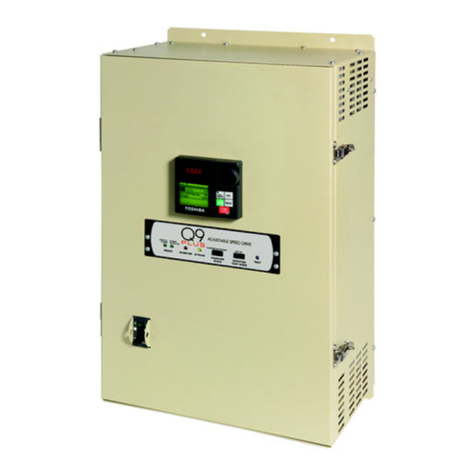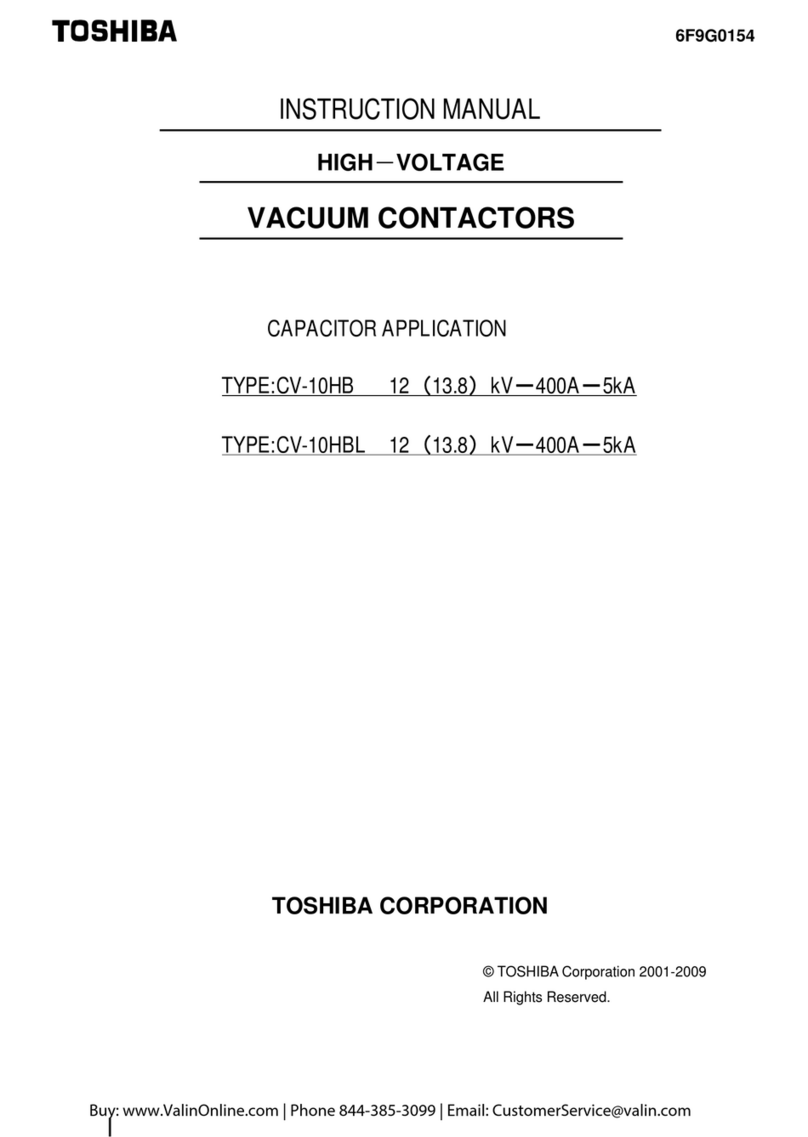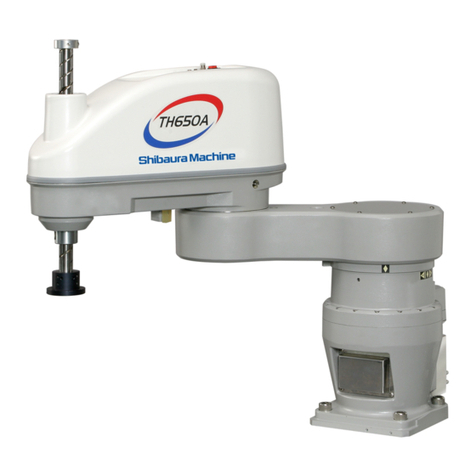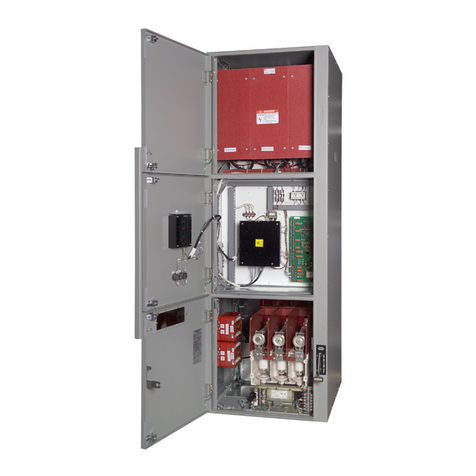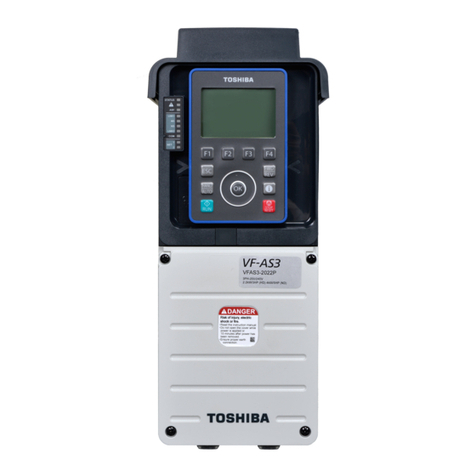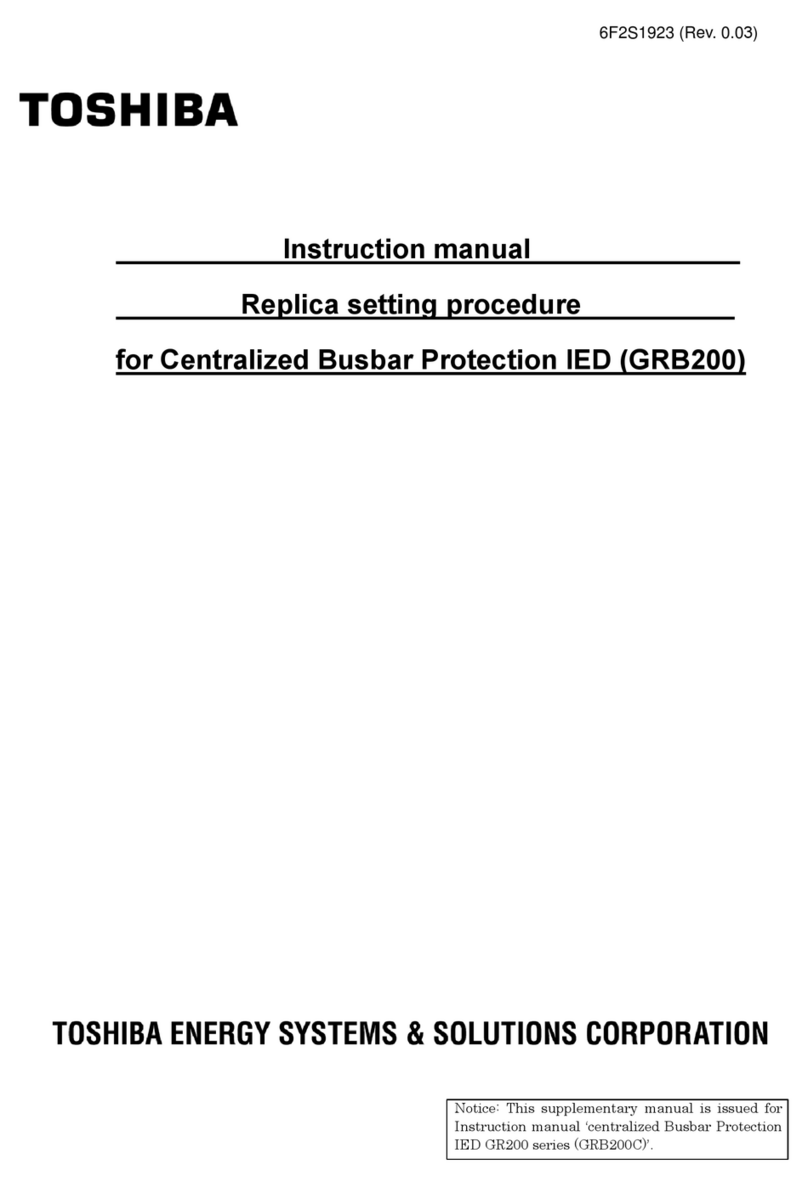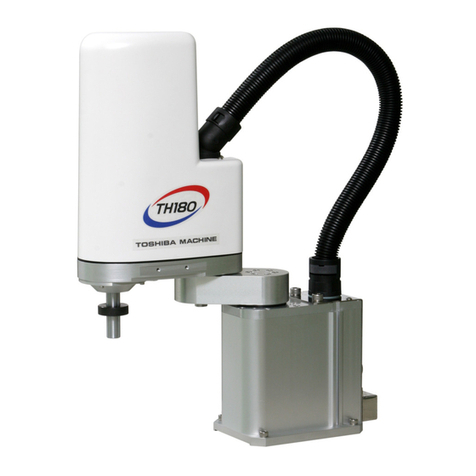
TOSHIBA
6F9G0134
5. INSTALLATION
When installing , protect from dust. Particularly when the contactor
is installed while the building is under construction , shield it from
cement dust and other foreign matter.
The following precautions should be taken.
(1) The mounting surface must be horizontal (level : less than
*I
mm).
When the
mountinlg
surface is not horizontal , adjust with spacers.
(2) There are four mounting holes.
Use Ml0 bolts to securely mount the contactor.
(3) In wiring the main circuit terminals , ground terminals and control
circuit , wires should be given sufficient length to be flexible.
The ground wires should be more than
5.5mm
in cross section.
(4) Do not mount the contactor with its front inclined downward.
This may result in
rnalfunction.
(5) Do not touch the vacuum interrupter surface with soiled hands.
(6) When it is applied
to
a capacitor load , be sure to used a space heater
to keep humidity low.
CAUTION : Do not install on energize contactor that has been bad condition
-
4-
